If you are gluten free and egg free, this list of Egg Substitutes in Gluten Free Baking can be helpful for you. Eggs play an important role in baking, providing structure, moisture, and leavening. This is even more necessary in gluten free baking.
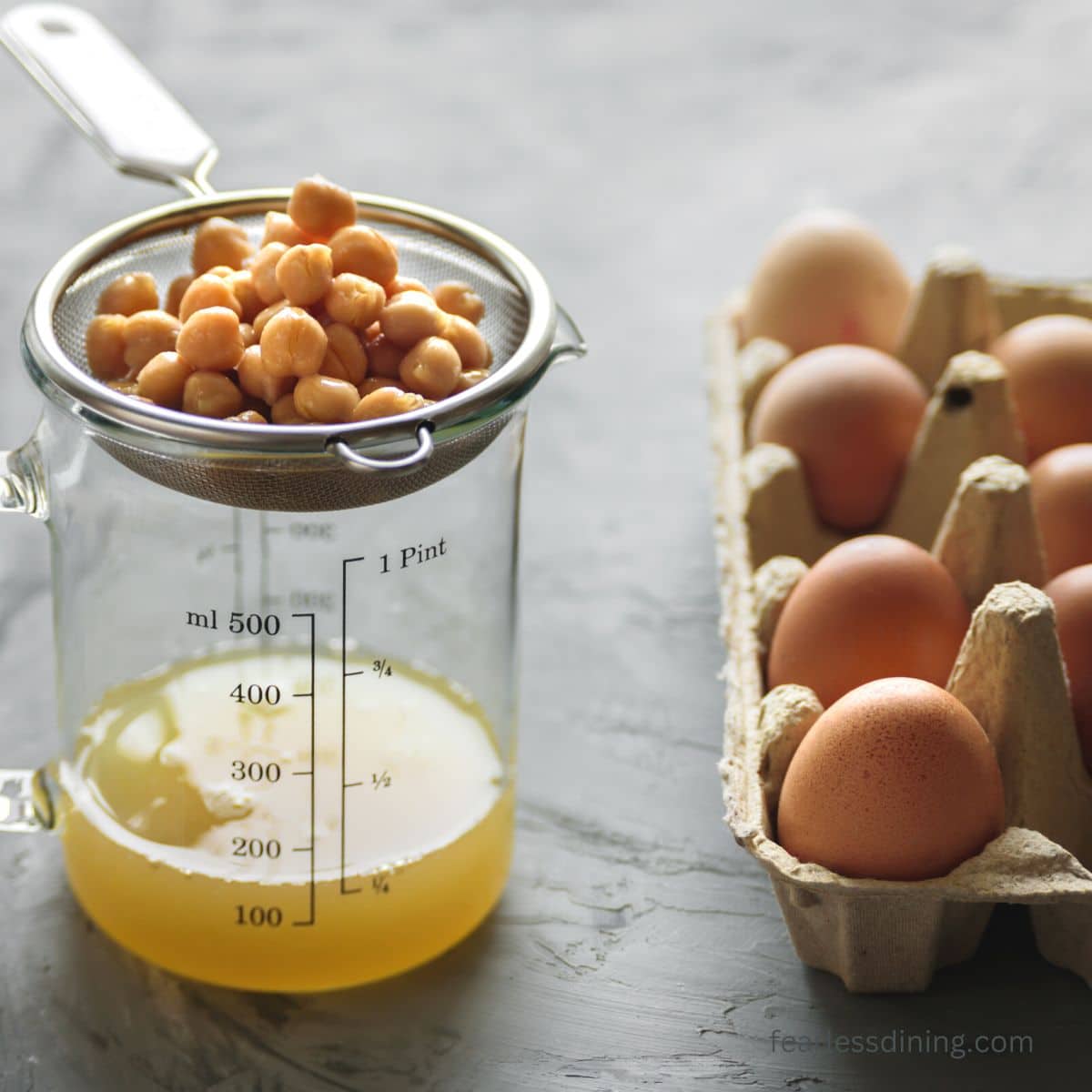
Gluten free baking is often compared to a chemistry project. Every gluten free flour blend behaves differently, depending on the starch content. Add in the complexity of people who also need to be egg-free, and it gets even more difficult.
This post may contain affiliate links. Please read our Disclosure Policy.
I decided to research and test some of the commonly used egg substitutes and see how they performed in one of my baked recipes. Note I have not tested the yogurt, bananas, or vinegar/baking soda combinations in my recipes yet.
If you are looking for baking tips, my Gluten Free Baking Tips article has a lot of really helpful information, as does my article on the Best Gluten Free Flour, And What Recipes To Use Them In.
Common Egg Substitutes for Baking
For those with egg allergies or for those who are vegan and choose not to consume eggs, here are several egg substitutes that can be used in baking:
- Bob’s Red Mill Egg Replacer Powder
- Just Egg Liquid Egg Replacer.
- Aquafaba
- Unsweetened Applesauce
- Mashed Bananas
- Flax Eggs
- Chia Eggs
- Yogurt
- Vinegar and Baking Powder
These egg substitutes may change the texture and flavor of your baked goods, so it’s a good idea to experiment with different egg substitutes to find the one that works best for your recipe. Remember that the results may vary based on the specific recipe and the amount of egg being substituted.
This article does not guarantee that these egg substitutes will work in my recipes. I am only one person, and I do not have the bandwidth to test all of these egg replacers in a lot of recipes.
If I tested a recipe and it was successful, I will link the recipe in the appropriate section. I would be very grateful if you try any, to please leave a comment and let us all know how it turned out.
If you are on a budget, here are some great Gluten Free Living on a Budget Tips and Tricks To Save Money.
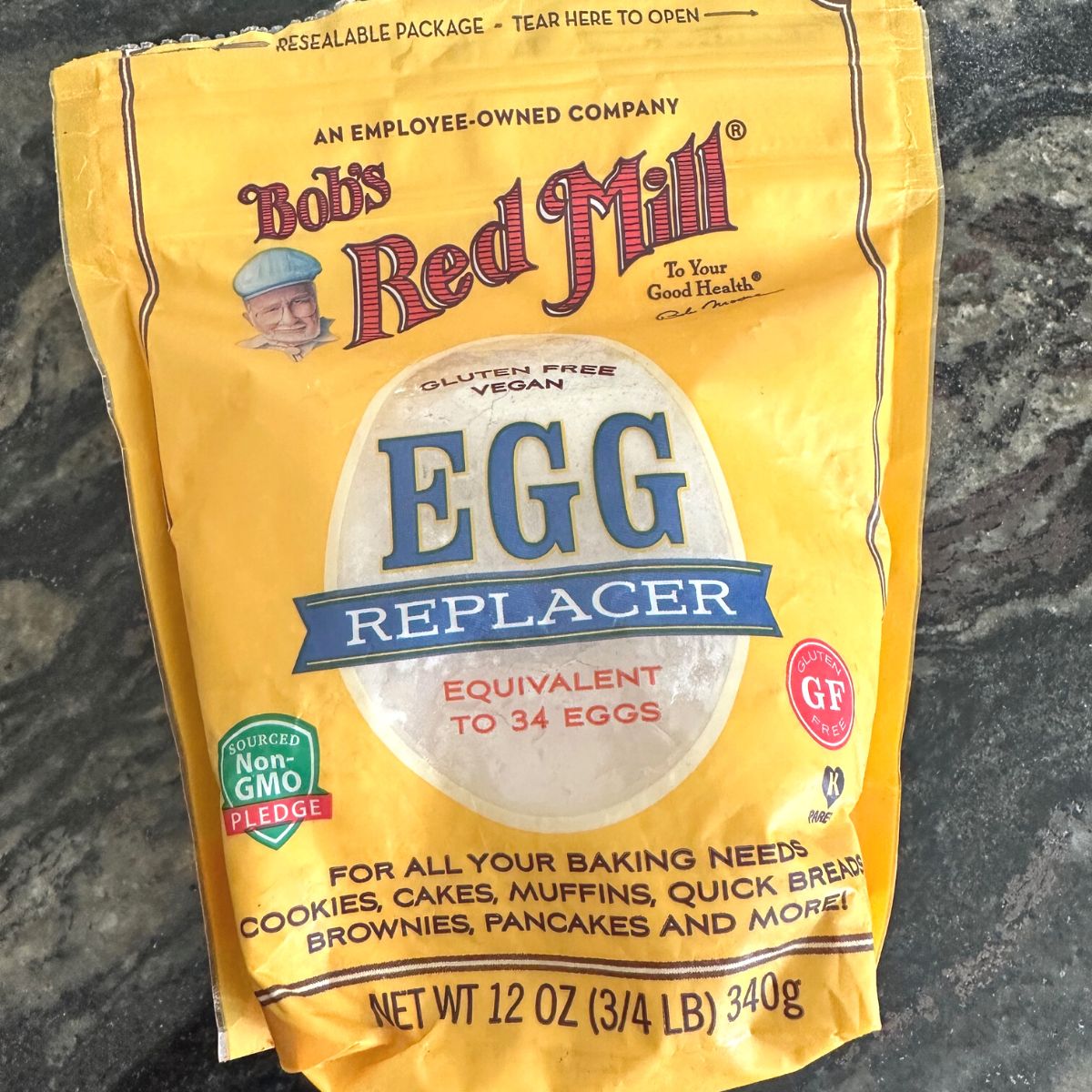
Bob’s Red Mill Egg Replacer
Bob’s Red Mill Egg Replacer is a powdered egg substitute used in baking. It is both certified gluten free and vegan. It is made with potato starch, tapioca flour, baking soda, and psyllium husk fiber– it has no grains, soy, gluten, or beans.
It is mixed up as one tablespoon of this powder to two tablespoons of water. You let it sit for a minute, stir it, and it thickens to a similar consistency to scrambled eggs. I like that this egg replacer is flavorless, and it doesn’t leave any aftertaste.
I tested this egg replacer in my Gluten Free Vanilla Donuts recipe, and it worked really well. Over time, I plan to test this powder in more recipes.
Just Egg
Just Egg is a gluten free liquid egg replacer found in the refrigerated case with the eggs in most grocery stores. It is made with water, mung bean protein isolate, and expeller-pressed canola oil. it contains less than 2% of dehydrated onion, gellan gum, natural carrot extractives (color), natural flavors, natural turmeric extractives (color), potassium citrate, salt, sugar, tapioca syrup solids, tetrasodium pyrophosphate, transglutaminase, and nisin (preservative).
This product is designed to mimic eggs in many ways, including making vegan scrambled eggs. In baking, it should be used in recipes with a stronger flavor to mask the bean flavor.
I tested Just Egg in one recipe, my Gluten Free Vegan Muffins. I found it worked really well, and I did get a good rise in my muffins.
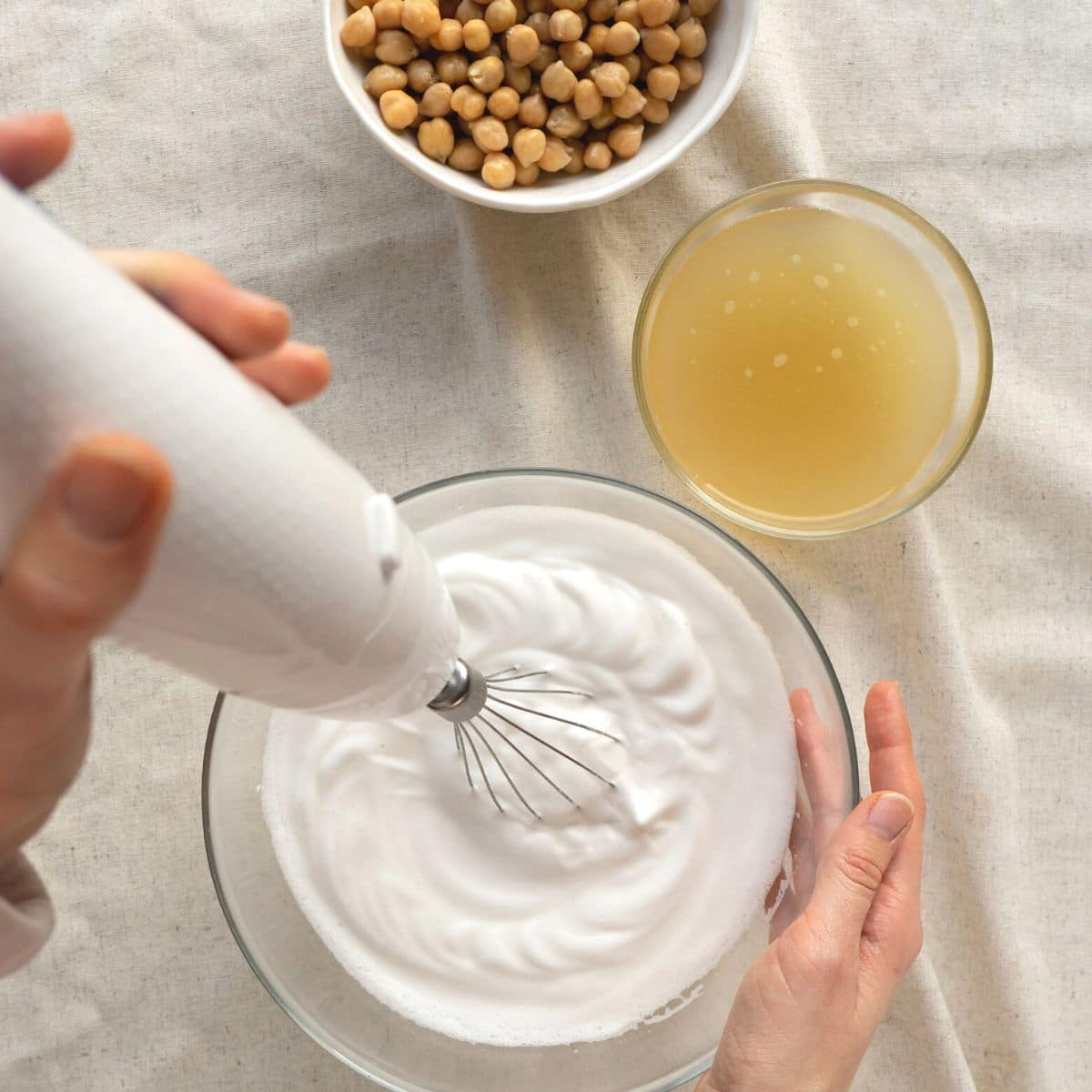
Aquafaba
Aquafaba is the liquid from a can of chickpeas and can be used as an egg replacer in baking because it has similar properties to egg whites. When whipped, aquafaba forms a stable foam that can be used in various recipes, including meringues and macarons, and as an egg white substitute in baking. Here’s how you can use aquafaba as an egg replacer:
- Drain a can of chickpeas and reserve the liquid. Use this liquid in baking and add it to the liquid ingredients.
- Add the aquafaba into a
mixing bowl and beat with an electric mixer until it forms soft peaks for meringues and macarons. This can take anywhere from 5 to 15 minutes, depending on the strength of your mixer. - Use the whipped aquafaba as a substitute for egg whites in your recipe. I didn’t detect any strong bean flavors, but some people do notice it, so I would say use it in baking recipes with another predominant flavor, like chocolate.
Please know that while aquafaba can be used as a substitute for egg, it is not a perfect match and may result in a slightly different texture and taste in baking.
Bananas
Many in my gluten free Facebook group like to use mashed bananas in place of eggs in recipes. Bananas can be used as an egg replacer in some baking because, when mashed, they have a similar texture and binding properties as eggs. The starch and natural sugars in bananas can help to provide some structure to baked goods and also help to sweeten the recipe.
Here’s how you can use them as an egg replacer:
- For one egg, mash one ripe banana until it’s smooth and creamy. You want about 1/4 cup of mashed banana for one egg.
- Stir it into your batter or dough instead of the egg.
- The banana flavor will come through in the final product. That is because bananas have a strong flavor, so they may not be suitable for all recipes. However, it can work well in recipes for sweet baked goods, such as banana bread, muffins, or pancakes.
It’s important to note that bananas will not work in recipes that rely on eggs’ structure and leavening properties, such as soufflés or meringues. In these cases, you need to use a different egg replacer (see aquafaba above) or find a recipe specifically designed to be made without eggs.
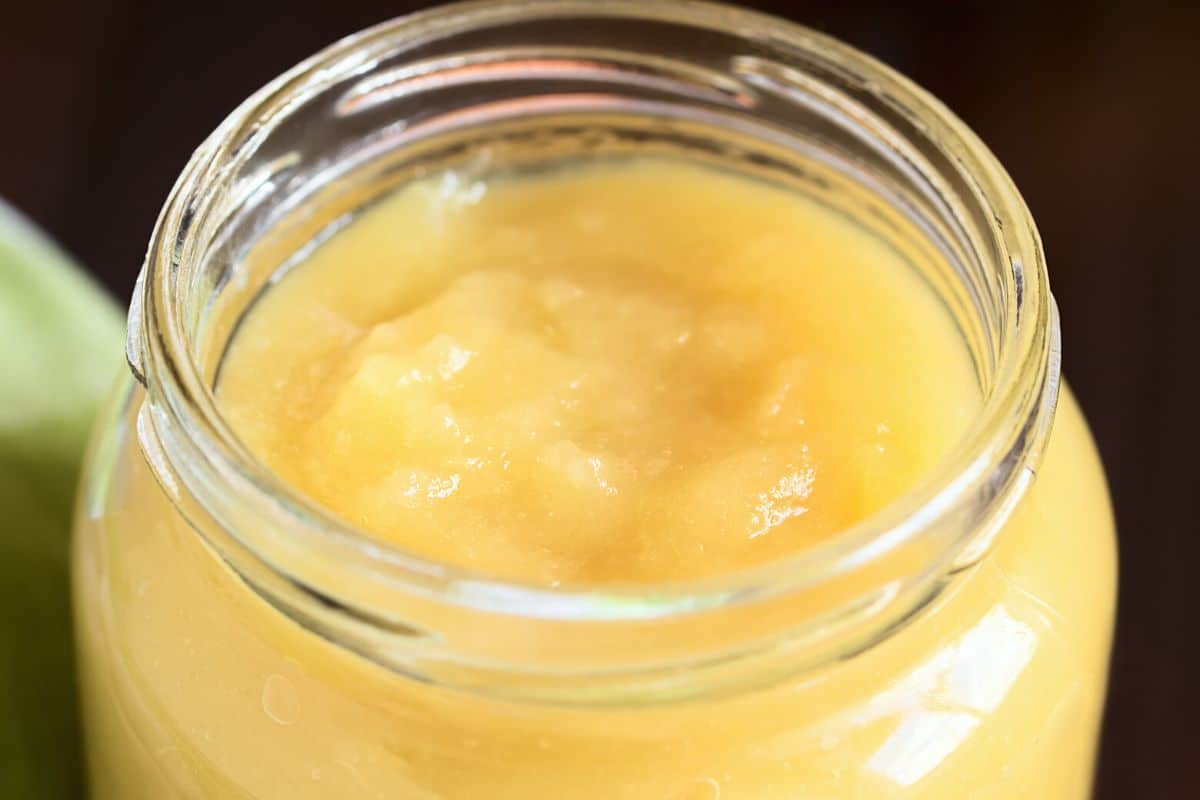
Applesauce
This is another favorite of my Facebook group readers. For more info, join my Facebook Group, Gluten Free Living and Recipe Share. They like to use applesauce as an egg replacer in some baking because it has a similar texture and ability to bind ingredients together as eggs. The natural sugars and pectin in applesauce help to provide structure and moisture to baked goods, and they can also contribute to the overall sweetness of the recipe.
Here’s how you can use applesauce as an egg replacer:
- For one egg, substitute 1/4 cup of unsweetened applesauce.
- Stir the applesauce into the batter or dough in place of one egg.
- Remember that the applesauce will also add an apple flavor to the final product, so it won’t be suitable for all recipes. However, it can work well in some recipes for sweet baked goods, such as muffins or quick bread.
I tested using applesauce instead of eggs in my Gluten Free Vanilla Mug Cake recipe when creating an apple-flavored mug cake. It did not work, so I will have to do more testing to see if this option is viable for any gluten-free recipes.
Flax Eggs:
Flax eggs are another popular egg substitute in vegan and egg-free baking. They are made with ground flaxseed meal. To make a flax egg:
- Mix one tablespoon of ground flax seeds with three tablespoons of water.
- Let it sit for 5-10 minutes until it forms a gel-like consistency.
- This mixture is used as a replacement for one egg in a recipe.
In testing this egg replacer, I felt it added a nutty flavor to my baking.
My reader, Meagan, used flax eggs in my Gluten Free Banana Oat Muffins and said it worked great.
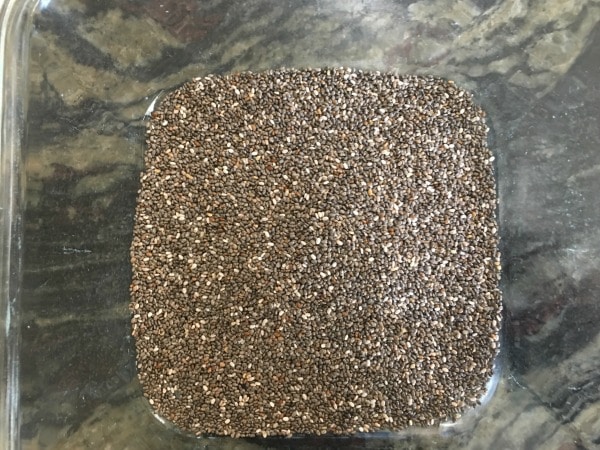
Chia Eggs:
Chia seeds are a popular egg substitute in vegan and egg-free baking. I love chia seeds because they add protein to recipes, which can help balance out some sugar. I love adding them to my Gluten Free Granola Bars recipe.
Make a chia egg in two steps:
- Mix one tablespoon of chia seeds with three tablespoons of water.
- Let it sit for 5-10 minutes until it forms a gel-like consistency.
- This mixture equals one egg in a recipe.
The chia seeds absorb the water and form a textured gel that binds and adds moisture to the batter, much like eggs in traditional baking recipes. However, it is important for me to mention that chia eggs will add a “bumpy” texture to your baked goods. (This was a hard no with my picky eater.)
Chia eggs will not provide the same structure and rise as eggs, so the result may be slightly different from using an egg in the recipe.
After playing around with testing chia eggs, I think chia eggs can be a useful egg substitute for those who are vegan or have an egg allergy. Still, it may take some experimentation to find the right balance for your recipe. I found it didn’t work well in my recipes.
I love chia pudding for breakfast, and I plan to test chia eggs more.

Yogurt
Yogurt (sometimes) can be used as an egg replacer in baking because it has a similar texture and ability to bind ingredients together as eggs. The acidity in yogurt helps to react with baking soda and baking powder, which can provide leavening and structure to baked goods.
Here’s how you can use yogurt as an egg replacer:
- For one egg, substitute 1/4 cup of plain yogurt.
- Stir the yogurt into the batter or dough in place of one egg.
- Please remember that yogurt will also add a tangy flavor to what you bake, and it will not work in all recipes.
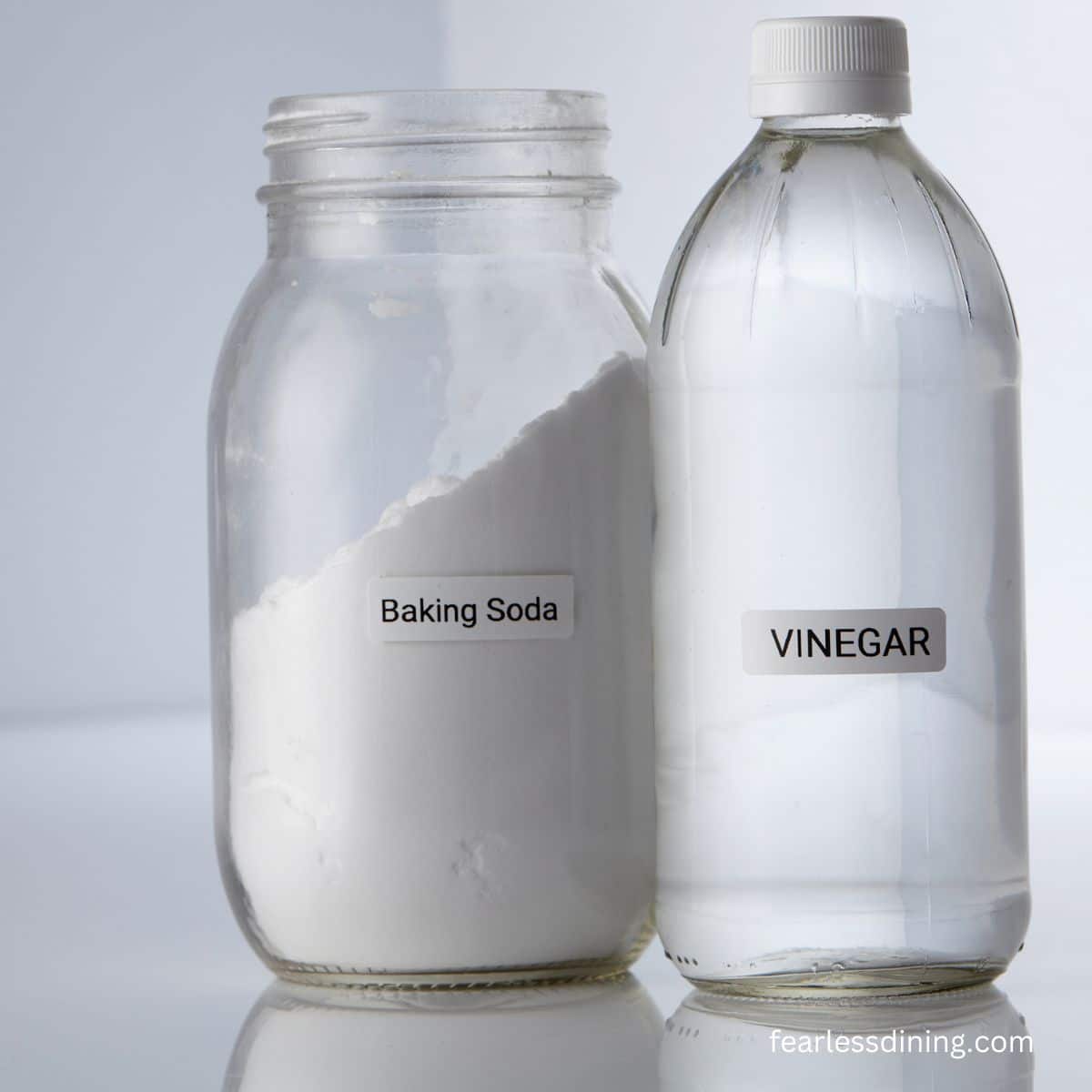
Vinegar and Baking Soda
Vinegar and baking soda can be used as egg replacers in baking because they can react with each other to create a leavening effect that helps to provide structure and rise. The reaction between vinegar and baking soda produces carbon dioxide gas, which becomes trapped in the batter and causes the baked goods to rise.
I use some vinegar in my Gluten Free Bread Machine Bread Recipe to help give more rise to my custom flour blend.
If you decide to try vinegar and baking soda as an egg replacer, here is how:
- For one egg, mix one teaspoon of baking soda with one tablespoon of white vinegar. Let it sit for a moment.
- Stir the mixture into the batter or dough in place of one egg.
- Remember that the reaction between the vinegar and baking soda will affect the final product’s flavor, so it will not be suitable for all recipes. However, it can work well in recipes for sweet baked goods, such as muffins, quick bread, or cake.
It’s important to note that vinegar and baking soda will not work like eggs in recipes that rely on the structure and stability provided by eggs, such as soufflés or meringues. I also read that vinegar and baking soda can cause a slightly dense texture in the final product, so I have no plans to test this.
I just wanted to say this again so everyone sees it. This article is not a guarantee that these egg substitutes will work in all of my recipes. As a solo business owner, I do not have the bandwidth to test every egg replacer in all of my recipes. When you try one, please let me know the results!
Let me know which of these egg replacers you have tested in gluten free recipes!!

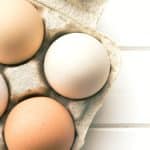
I use applesauce instead of eggs in my pumpkin bread (cake) recipe, and gluten free flour to make it both vegan and gluten free. It works really well.
I will have to try adding applesauce next time. I bet it adds to the flavor!
You can also use mayo. There is an Ener-G egg replacer in a box, similar to Bob’s.
Oh, I haven’t heard about using mayo. Thank you. A couple of people in the Facebook group mentioned Ener-G as well. I will have to try to find that one.
Mayo is made of eggs so those us that have an egg allergy please be aware of that.
Yes, in this case it would need to be one of the vegan mayo brands.
What an incredible resource this is for all bakers who might need to make something egg-free. Thank you so much!
You are very welcome! Gluten free is hard enough, but for those who are also egg free, it is even more difficult.